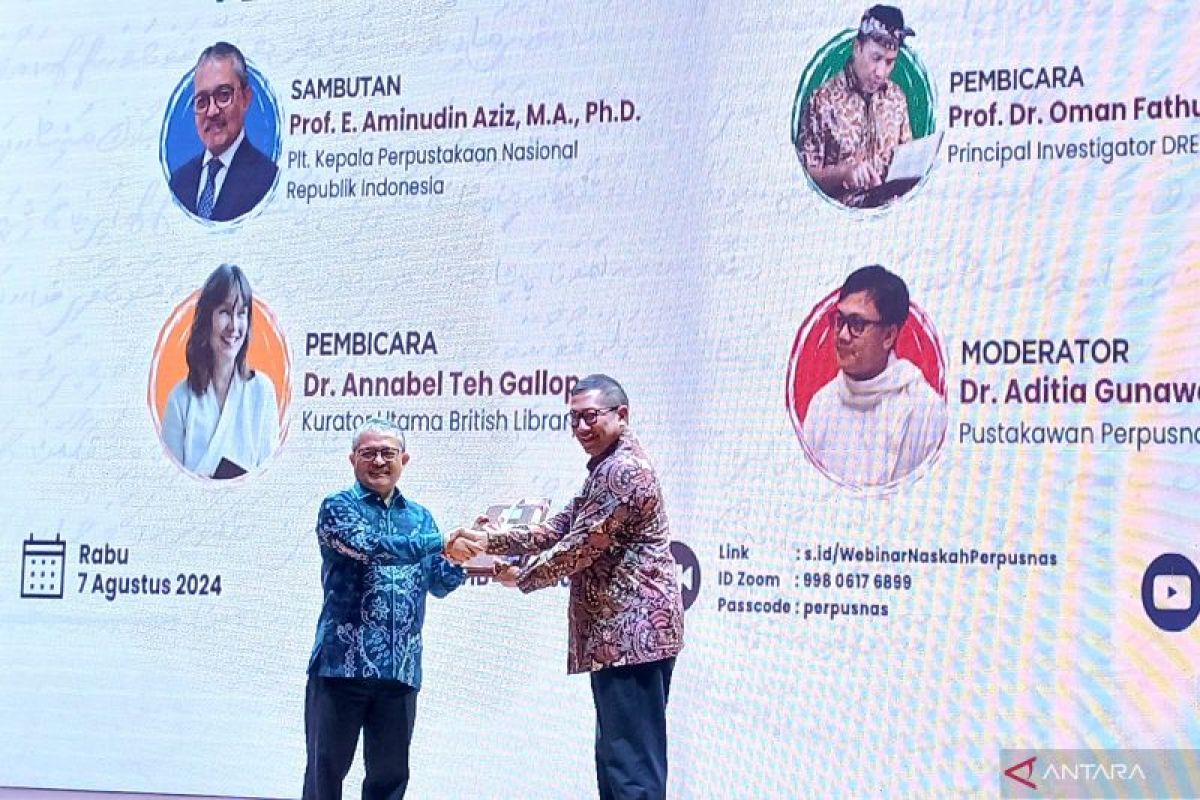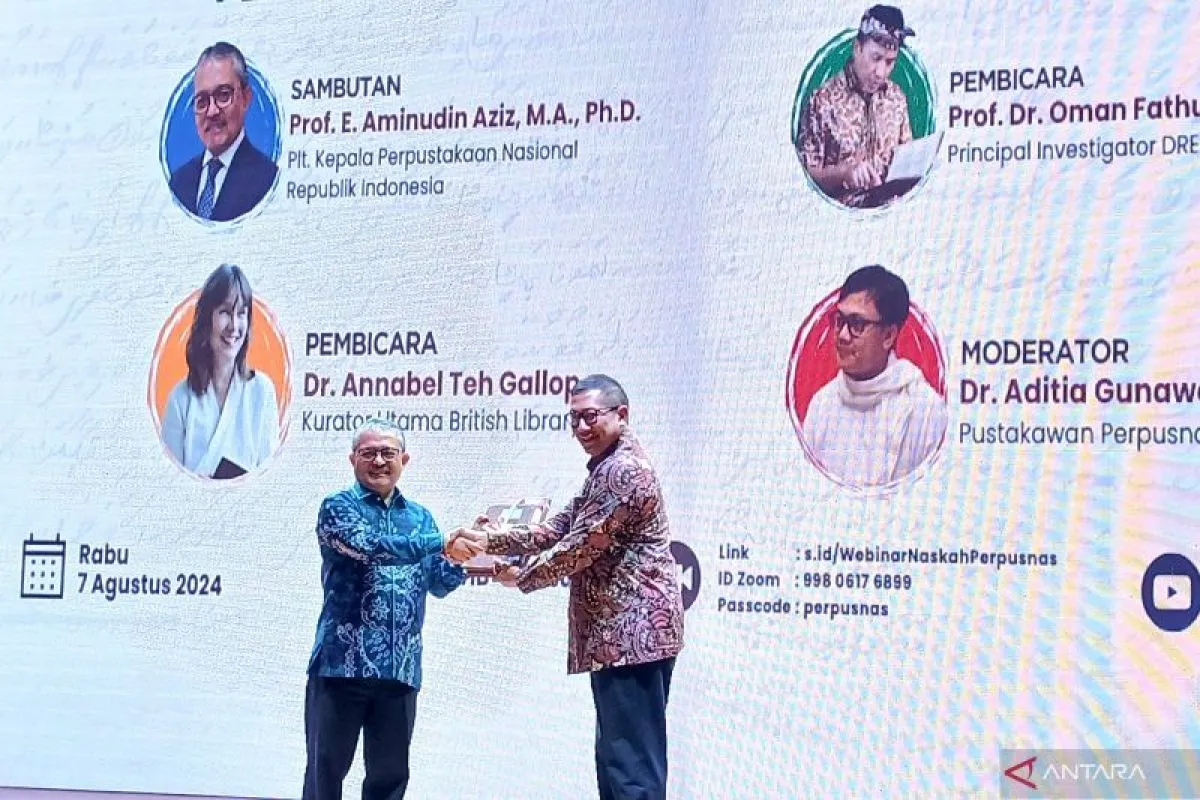Jakarta (ANTARA) - The National Library has surpassed Leiden University Library to become the world's largest repository of Sundanese manuscripts. The library's collection has been boosted to over one thousand items by the recent acquisition of 536 ancient manuscripts from French researcher Viviane Sukanda Tessier and her partner R. Haris Sukanda Natasasmita.
"We now surpass Leiden University Library's collection of 785 similar manuscripts," E. Aminudin Aziz, Acting Head of the National Library, stated at a press conference in Jakarta, Wednesday.
"This is a remarkable achievement, given the time-consuming nature of collecting and processing such materials," Aziz stated.
These newly acquired manuscripts, meticulously preserved by the Ngariksa Budaya Indonesia Foundation, offer invaluable insights into Sundanese society. The library is working to digitize and make these historical documents accessible to researchers and the public
The newly acquired manuscripts, combined with the library's existing 467 manuscripts, bring the total to 1,003 manuscripts. The Ngariksa Budaya Indonesia Foundation, which promotes manuscript literacy through its Ngariksa Channel, has processed and preserved these manuscripts for seven years.
"The foundation approached us to transfer the manuscripts," Aminudin explained.
Through collaboration with the Center for the Study of Manuscript Culture (CSMC) at Hamburg University, these 536 manuscripts, along with 271 accompanying translation notes, were digitized and cataloged using the Dreamsea project," Azis revealed.
The digitized manuscripts will be accessible on the Khasanah pusat Nusantara (Khastara) platform.
Baca juga: Sundanese manuscript collection National library holds world's largest
Baca juga: Ministry provides tourism education scholarship for Natuna people
"We want to make these manuscripts widely available, not just for researchers but also for the public," Azis emphasized.
"We are exploring ways to transform them into accessible reading materials," he remarked.
The Ngariksa Foundation's collection primarily features the Pegon script and Sundanese language, with some Javanese and Arabic. The manuscripts primarily document Sundanese society's deep Islamic influence in rituals, advice, literature, law, astrology, and agriculture.
"We now surpass Leiden University Library's collection of 785 similar manuscripts," E. Aminudin Aziz, Acting Head of the National Library, stated at a press conference in Jakarta, Wednesday.
"This is a remarkable achievement, given the time-consuming nature of collecting and processing such materials," Aziz stated.
These newly acquired manuscripts, meticulously preserved by the Ngariksa Budaya Indonesia Foundation, offer invaluable insights into Sundanese society. The library is working to digitize and make these historical documents accessible to researchers and the public
The newly acquired manuscripts, combined with the library's existing 467 manuscripts, bring the total to 1,003 manuscripts. The Ngariksa Budaya Indonesia Foundation, which promotes manuscript literacy through its Ngariksa Channel, has processed and preserved these manuscripts for seven years.
"The foundation approached us to transfer the manuscripts," Aminudin explained.
Through collaboration with the Center for the Study of Manuscript Culture (CSMC) at Hamburg University, these 536 manuscripts, along with 271 accompanying translation notes, were digitized and cataloged using the Dreamsea project," Azis revealed.
The digitized manuscripts will be accessible on the Khasanah pusat Nusantara (Khastara) platform.
Baca juga: Sundanese manuscript collection National library holds world's largest
Baca juga: Ministry provides tourism education scholarship for Natuna people
"We want to make these manuscripts widely available, not just for researchers but also for the public," Azis emphasized.
"We are exploring ways to transform them into accessible reading materials," he remarked.
The Ngariksa Foundation's collection primarily features the Pegon script and Sundanese language, with some Javanese and Arabic. The manuscripts primarily document Sundanese society's deep Islamic influence in rituals, advice, literature, law, astrology, and agriculture.


